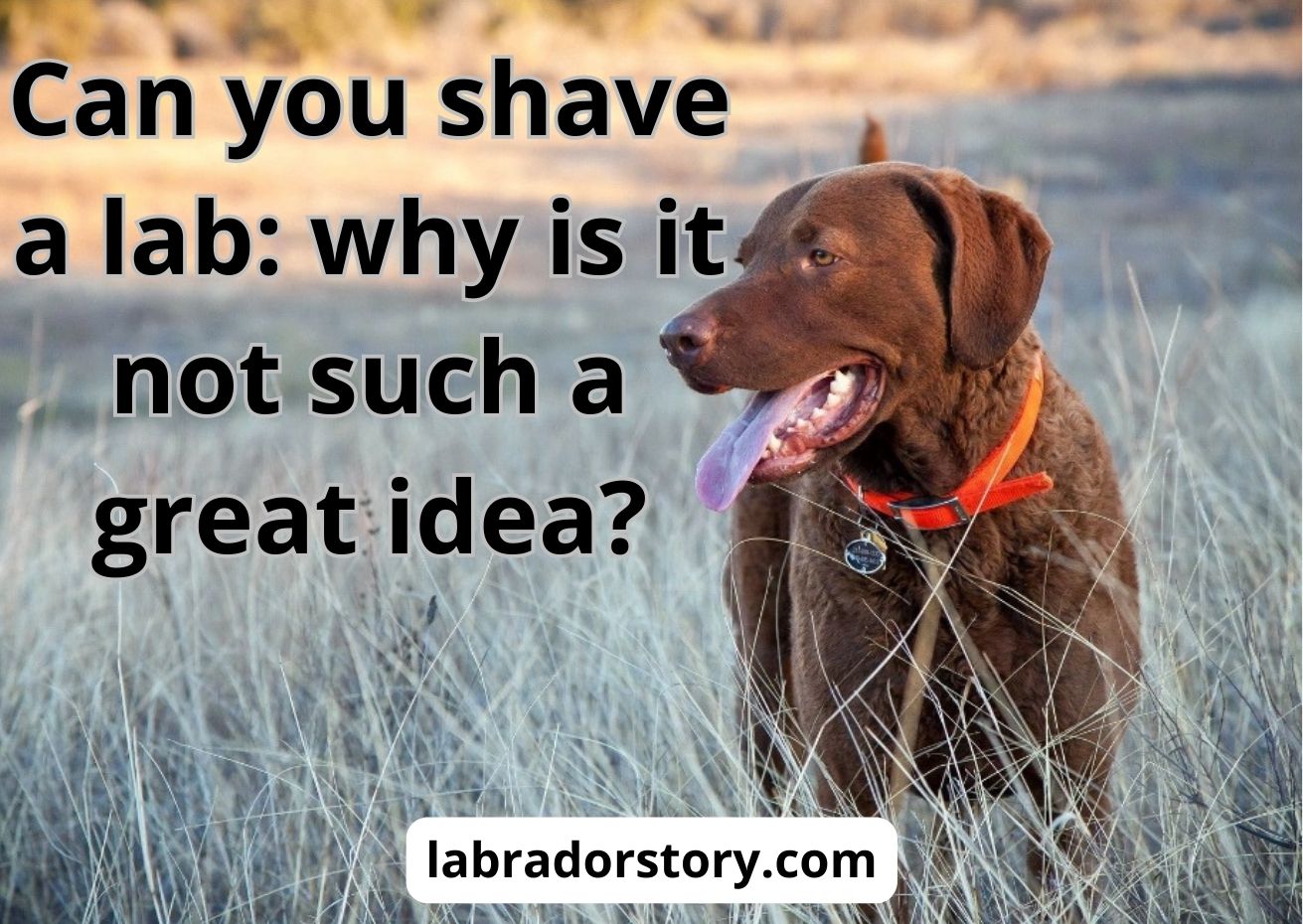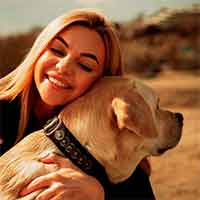Last Updated on November 15, 2023 by Linda Richard
Many Labrador owners start to consider shaving their Labrador’s coat for different reasons. Some wish to do it to relieve their pooch from the extreme summer heat, which sometimes can be almost unbearable. Some choose to shave their Lab to reduce shedding, as this dog sheds a lot.
But, can you shave a Lab, or are there some other actions you can do to keep your dog safe in the unbearable heat?
The quick answer is no. You should not shave your Labrador’s coat.
Shaving your Labrador retriever’s coat can do more damage than good because it disrupts its protecting double coat. This can reduce your Lab’s ability to the regulation of the temperature and deteriorate the condition of its skin.
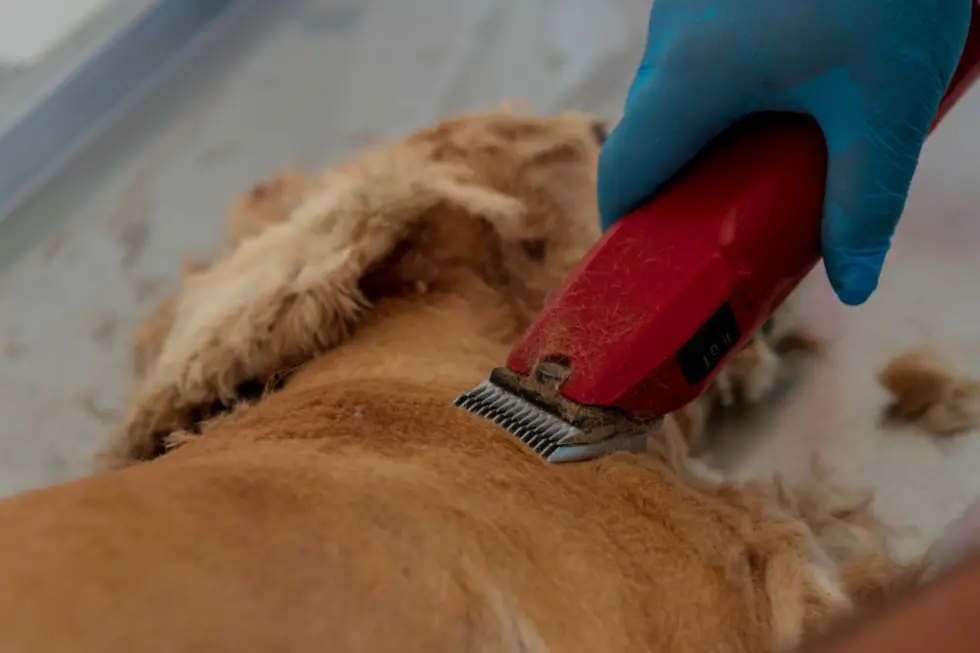
Before you start to clip a Lab’s coat, it is essential to be aware of the possible quite harmful long-term consequences.
In this article, you will learn the importance of your dog’s coat why you should never shave it, and some alternative variants to shaving.
Table of Contents
Labrador double coat
The Labrador coat type is quite specific and it is mostly referred to as a double coat. What is this double coat exactly?
- All dogs are not absolutely similar to each other, there exist distinctions in kind of their fur.
- One of the significant distinctions between dog breeds is whether they are single-coated or double-coated.
- A double-coated dog breed like the Labrador Retriever supplied from nature with has a thick double coat.
- The outer layer is frequently referred to as the guard coat or outer coat, and the coat underneath is called the undercoat.
- The outer coat consists of longer guard hairs which are mostly quite harsh. The inner layer, also known as the undercoat, consists of dense, short hairs that mostly have a wooly texture, and are quite silky to the touch.
Besides making Labs look gorgeous, their luxurious double coats have several fairly significant aspects. They include the capability to regulate temperature and protection.
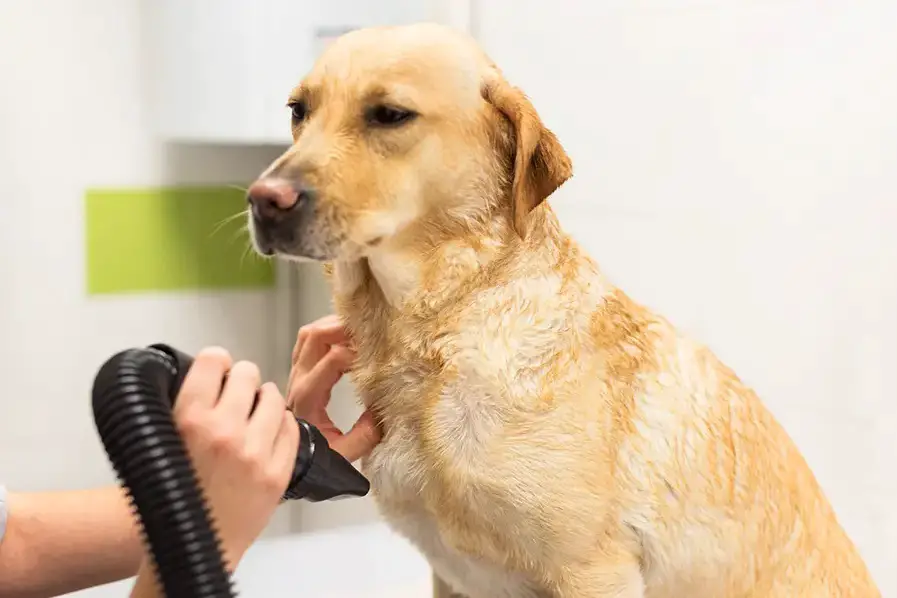
The importance of a double coat
A Labrador’s genetics were fairly closely related to low temperatures and waters. Due to this nature has supplied Labrador coat in such a way as to shield itself from the external environment.
The outer coat is capable to repel water, ice, and even dirt. Whereas, the undercoat which is quite thick and dense plays a very significant role in shielding your Lab when the weather changes rapidly. It is capable to keep your dog warm even when the climate is extremely cold, and it helps the dog to remain cooler when the weather is too hot.
So, the double coat, which is the double-layered fur, can offer protection from cold weather, water, and other factors of the environment.
Why is shaving a Labrador, not such a good idea?
So, can you shave a lab? No, the Labrador retriever shouldn’t be shaved.
Shaving or trimming your Labrador’s fur is not essential if you wish the dog to remain cool during the summer. This is because your dog is shedding the undercoat involuntarily into a more thin variation to ready itself for the summer heat.
Despite the fact, that Labs shed during the whole year, there is something known as the Labrador shedding season.
The shedding season is the time during which the Labrador begins to shed its fur in more significant amounts.
Every time with approaching of summer, there happens a kind of shedding, known as coat blow and the dog makes the change from winter to summer.
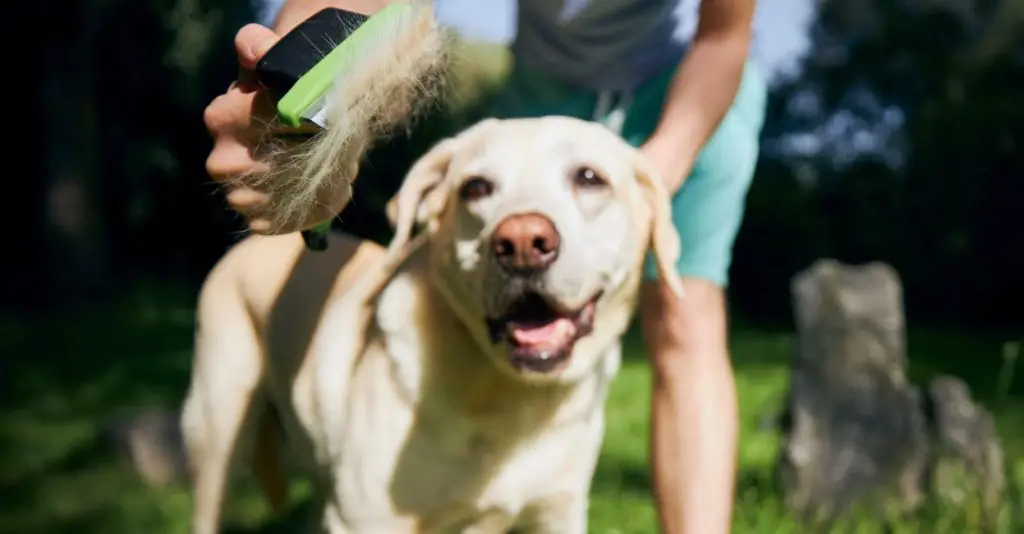
Likewise, this coat blow happens again when there is a need to transition from summer to winter, to shield itself.
Nature created the dog’s body to adjust according to the weather changes. Thus shaving your Labrador interferes and disturbs its process of coat change that should occur naturally.
So, your Labrador’s shedding is an absolutely ordinary part of a dog’s life.
5 consequences of shaving a Labrador
If you are considering shaving your Labrador retriever, your dog is fairly possibly will encounter these particular issues.
Your Labrador’s coat will change forever
Many owners who wish to shave their Labs are not aware that their dog’s coat will never be exactly the same.
Labradors essentially have a dense and soft undercoat, but after it is shaved and starts to grow back, the inner coat will be more coarse, heavy, and scratchy.
So, in place of those delicate short fur that has made your Lab protected during winter and summer, will grow the new rougher fur will only induce irritation of their skin.
You will realize the full degree of the harm only after your dog’s fur will grow back again. But, it is better to prepare that unfortunately, your Labrador’s coat will not be as light, silky, or dense as it was before you shaved it.
Also, no matter when you shave your dog, the thick undercoat will start to grow instantly, but the outer layer is not able to grow so fast.
The new coat in most cases ends up being quite harsh and more prone to attract dirt.

In summer, the dog sheds the undercoat making it less thick to adjust to the hot weather. In case you interfere and shaving the coat induces the regrown fur to be dense, unruly, and rough which stops the air and it cannot reach the dog’s skin.
Shaved Labrador Retrievers can get sunburned
Have you ever thought about why your Lab never gets sunburns, even though it frequently plays in the direct sun? The reason is that your dog’s guard hairs work as a shielding barrier that can stop the sun rays from contact with your dog’s skin.
Because a dog’s skin is significantly more delicate than people’s skin, shaving your Lab can induce an increased risk to get sunburn when it walking in the sun. But, that’s not the most terrible part. Without the coat and the protection that can provide against UV light, the risk to get skin cancer is increasing for shaved Labrador.
Shaving your Lab doesn’t help reduce your allergies
Quite frequently people with allergies think that it’s the dog’s coat and the shedding that is provoking you to sneeze.
In this case, shaving a lab to lessen shedding might look like the best and the only choice to get rid of pet allergies for good.
Nevertheless, despite some common opinions, it’s not the hair, but the pet dander that induces redundant sneezing and teary eyes. If you shave your dog it will significantly increase your encounter with dander because currently it cannot be trapped by the fur and stopped, so it becomes airborne.
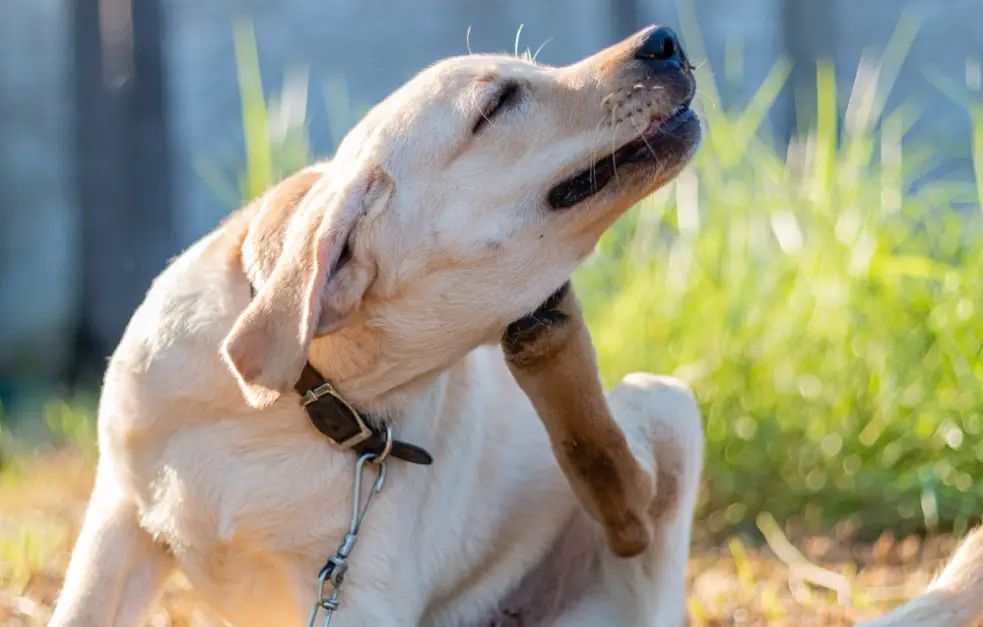
By shaving your Lab’s coat, you will inadvertently allow the pet dander to sprinkle everywhere and provoke more intense signs of an allergy.
If you shaved your Lab and your allergy became noticeably more intense than before, you ought to be aware that this is a quite typical negative effect of shaving a pooch.
Hair regrowth can be awfully unpleasant
This is one of those aspects most owners are not able to realize when they decide to shave their pooch’s coat. When the coat is regrowing it is not frequently enjoyable for dogs and can make your Lab quite unpleasant.
When you shave your Labrador’s coat entirely, the soft undercoat will be lost forever. Although the new coat will grow out, the hairs will be rough, and fairly abrasive, making your pooch itchy.
Itching and scratching are often related, and your dog might start to scratch its sensitive skin, inflicting significant damage.
Also, there is the possibility that the new rough and scratchy hairs will presumably irritate your skin every time you try you will be petting or cuddling your canine companion.
Can induce terrible skin issues
Shaving your dog’s coat can make the pet more vulnerable to allergies and skin issues.
Quite many dogs suffer from awful skin issues after they were shaved entirely. Hot spots appear on the skin which need more time to heal.
If you shaved a Labrador, you are just removed the protection that its fur is capable to offer and revealed its pale delicate skin to the severe external environment.
Alternative variants to shaving a Labrador
Hence rather than shaving your Labrador, it would be good to find other ways to make your dog feel comfortable and to fix its fur issues.
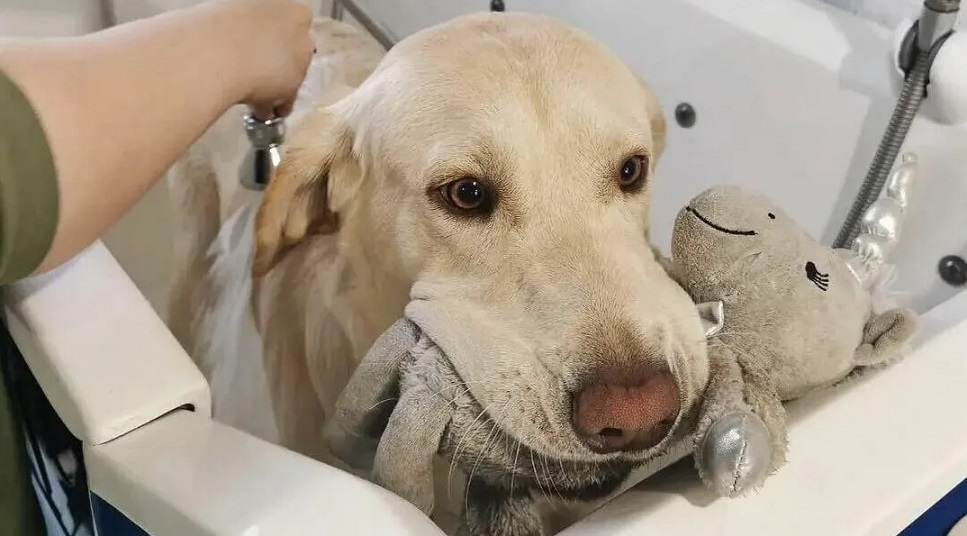
Groom your Lab regularly
As it was already sad, if wish to shave your Lab to reduce shedding, it won’t work. So if you thinking of this just because your pooch is shedding excessively, regular grooming is the most suitable alternative decision.
It is essential to know, that lab’s fur is different from human hair and requires different tools for the grooming routine.
For satisfactory results, you’ll need a sturdy brush that can penetrate their thick coat and remove loose hair.
Also, two fitting choices are a slicker brush or a de-shedding tool like the Furminator. With the help of this tool, you can effortlessly remove loose hair and soft undercoat without damaging the skin.
Afterward, you can use a bristle brush for removing the dust and spread the oil all over your Lab’s body for a silky, shiny coat.
If you will start to groom your pooch regularly and use these Labrador grooming tips, the amount of excess shedding reduces quite noticeably.
Cool alternative choices for your Lab
If you have a feeling that your dog is being overly heated in summer, then shaving is certainly not a good choice. Because shaving your dog’s fur away is not capable to keep your dog cool.
Your dog always should be supplied with a satisfactory quantity of clean water in its water bowl. Because fitting hydration is an excellent solution for cooling your dog.
A dog with a satisfactory level of hydration can cool its body naturally and in a more efficient way when it pants.
Make certain that your dog is resting in some shady place.
It is advisable to make changes to the usual time when your dog is playing and exercising according to the temperature outside. When is extreme heat outside it is better for your dog won’t be doing any exercising at all.
Walk in the morning or evening
This can help to prevent your Lab from overheating.
Also, if you already shaved your dog, don’t take it outdoors when it is extremely hot. Keep your pet indoors in the air conditioning or with a fan so that your dog is comfortable.
Can you shave a lab? Why Labradors are shedding so much? On our website we have answer to these and many other questions. For learning more please use a website search or open the link.
Frequently asked questions
Is it OK to cut a Labs hair?
A double-coated dog breed, such as a Labrador retriever shouldn’t be shaved. The Lab’s double coat works as a protective barrier and is capable to provide insulation, but after you shave it, your dog will be left without any protection.
The Lab’s coat has a few functions, shielding your Lab’s skin and undercoat from the sun rays and dirt.
Shaving your Labrador retriever can induce significant damage to its coat and also leads to the possibility of getting skin burns or skin cancer.
Does cutting a Labs hair help shedding?
No, it does not. In case you will shave your Lab, or give it a haircut it won’t help to solve shedding problems. The fur that grows back will be shorter.
So, when it begins to shed, you may have more issues cleaning it up.
Many people find that their vacuums are not able to pick up these shorter hairs, and they stay on the carpet.
Can you take a Lab to the groomer?
Yes, you can do this. Labrador retrievers need regular grooming to keep their coats fresh and clean. It can become an excellent option and can help you give your Labrador a healthy coat.
Also, Labradors are one of the simple dog breeds to groom at home.
Nevertheless, if you are wanting to give your dog some professional care you should visit your local groomer.
When are entirely shaved Labradors alright?
Labradors are shaved in some occasional cases at the vet’s office to treat a lab’s skin issue or operation. It can be a full-body shave or in particular cases some part of the body ought to be shaved.
The dog needs shaving in case of serious matting.
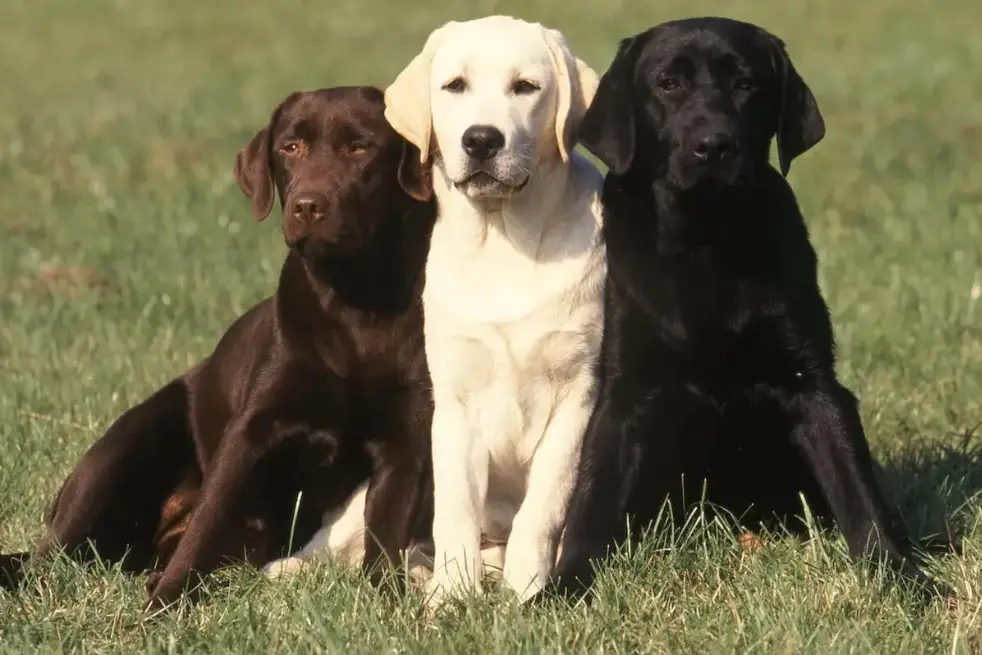
Conclusion
Shaving your Lab’s coat might seem like a wonderful thought and the most suitable choice to help your dog not get overheated during the summer heat. But by doing this you can harm your dog’s health.
You shouldn’t shave your Labrador retriever are, because it can induce significant damage to your dog’s coat. Also, shaved Labrador will be put at increased risk of skin cancer.
As a responsible lab owner, it is essential to thoughtfully consider the potential consequences of any choice you make for your beloved pooch.
If you want to read another point of view and find more answers to the question “Can you shave a lab?”, please open the link.
Read more about What color Labrador is most expensive: a complete guide
